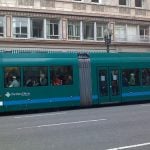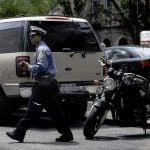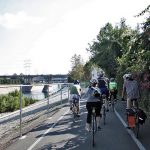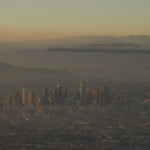Preferential parking in Los Angeles: boon or burden?
Los Angeles: notorious for its tough parking. Does preferential parking help solve the problem or aggravate it? That depends on whether or not you have preferential parking yourself.
What is preferential parking?
A Preferential Parking District restricts outsiders from parking in a neighborhood. Los Angeles has about 30 of these districts.
How does a district become a Preferential Parking District?
A neighborhood sends a formal request to the Los Angeles Department of Transportation (LADOT). Next, there’s a informal meeting to understand parking difficulties residents are facing and to explore alternative parking possibilities.
Then, a petition needs to be signed by two thirds of the majority of the residents living there. After this is verified by the LADOT, it conducts a study to see the nature of the parking problem. If three out of four spots are occupied, and one is taken by a non-resident, it is considered a parking problem.
After a minimum of four blocks pass the study, the LADOT writes a report and conducts a hearing with a public comment period. Once the city council passes the study, the Preferential Parking District comes into being. Then, notices are sent, signs posted, and $34 permits go on sale.
How does preferential parking work?
Residents determine the extent of parking restrictions. For instance, outsiders could be allowed to park for a couple of hours on weekdays, but not during evenings or weekends.
The flip side of residential parking is that residents need to buy permits for themselves and any guests. Not all residents in a neighborhood may favor preferential parking, because they may resent spending extra money on anyone who comes to visit them.

Is preferential parking an added burden on taxpayers? Image by colin.brown
Is preferential parking justified?
It probably was in 1979, when the ordinance allowing preferential parking first came into force. Students would throng some areas then, and their boisterous, late night comings and goings would inconvenience residents.
Moviegoers skimping on paying for parking were another irritant. Residents near shopping malls also faced more than their share of outsiders grabbing neighborhood parking.
On the other hand, some areas in a preferential parking district end up getting preferential parking even if they aren’t having any parking problems. This happens if the majority of residents there have signed the petition asking for a preferential parking district.
In addition to inconveniencing residents who live in the preferential parking district but don’t want the hassle of buying visitor permits, preferential parking is meant to exclude those who want to park in the area but are not residents.
Since their tax dollars help maintain streets too, it makes sense that they should be able to park in neighborhoods with preferential parking, says a city planning expert at Cornell University, Michael Manville.
Matching prices to demand and supply could be the answer. “The solution is to treat it as any commodity in high demand — put a price on it. Cities offer their public land on the street for well below what it’s worth, and it gets crowded. You run out of parking and neighbors get upset,” says Manville.
So although they do reduce sound pollution during peak shopping time, restricting parking in off-peak hours may not be the best way to solve intractable parking problems.
Related Posts
Category: No Parking

















